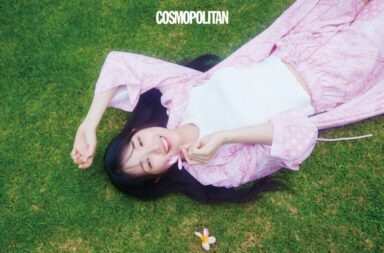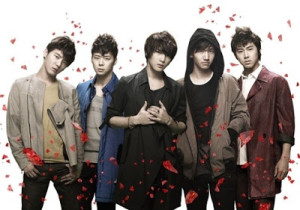 K-pop is pretty multidimensional, to say the least. When K-pop music first emerged onto the scene — not so long ago — the genre was pretty different to what we know it to be now. In a short amount of time it has gone through a vast transformation and quickly expanded and evolved into a phenomenon that has made itself known all over the globe.
K-pop is pretty multidimensional, to say the least. When K-pop music first emerged onto the scene — not so long ago — the genre was pretty different to what we know it to be now. In a short amount of time it has gone through a vast transformation and quickly expanded and evolved into a phenomenon that has made itself known all over the globe.
But through these changes, one component that has remained ever omnipresent within the genre is; the presence of the idol group system. Since it was established way back when, this group structure is still as prevalent today in the mainstream Korean music industry as it was when it first became popular. However, along with changes in the industry through the years, this system has also witnessed many alterations that have led to the abundance of groups in the market today. To understand these changes properly, we need to go back to K-pop roots.
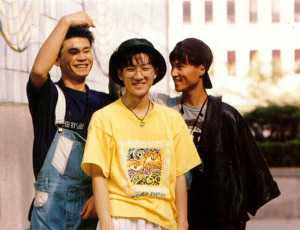 K-pop music as a whole contains various influences dating back decades. However, most people can come to the agreement that the genre truly started to take shape when one particular legendary group made their debut in 1992. Seo Taiji and the Boys crashed onto the scene with what was at the time, one of the most ground breaking and unique musical styles known to South Korea.
K-pop music as a whole contains various influences dating back decades. However, most people can come to the agreement that the genre truly started to take shape when one particular legendary group made their debut in 1992. Seo Taiji and the Boys crashed onto the scene with what was at the time, one of the most ground breaking and unique musical styles known to South Korea.
During a period of increased media liberalization and technological advancements that provided easy access to western popular culture, Koreans were becoming more and more exposed to outside influences and cultures different to their own. Couple this with the economic boom of the 90’s that boosted income for the predominantly young consumers of popular culture and it’s no wonder the group’s hybrid mix that combined elements of both modern American and traditional Korean music took the country by storm.
[youtube https://www.youtube.com/watch?v=EC7yS0kpHWM] Their fusion of hip hop, rock, rap, techno and dance layered with Korean lyrics was a sound unheard of in the industry and immediately catapulted the trio to the top of the charts. More importantly, it managed to establish an exhilarating new genre of music that provided a voice for the youth, giving them something they could relate to as well as providing them with a platform of expression that was distinguished from the music of adults. The more they gained popularity, the more they brought about definitive change to the music scene that unwittingly set a basic blueprint for foreseeable success in the popular Korean music industry, and eventually led to the emergence and the rise of the idol group.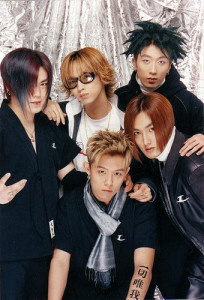 The very first of these was boy bands, H.O.T, was introduced to us by SM Entertainment’s training system in 1996 with their debut album We Hate All Kind Of Violence, targeted towards teenagers in Korea. As an idol group, they brought with them various attributes of pop music that were still relatively unused at the time; stellar visuals and a focus on the performance as a whole rather than just the music.
The very first of these was boy bands, H.O.T, was introduced to us by SM Entertainment’s training system in 1996 with their debut album We Hate All Kind Of Violence, targeted towards teenagers in Korea. As an idol group, they brought with them various attributes of pop music that were still relatively unused at the time; stellar visuals and a focus on the performance as a whole rather than just the music.
The five members possessed more than just talented vocals, and instead of the standard standing on the spot whilst belting out emotional ballads, emphasis was put on delivering actual performances featuring choreography, brightly themed fashion, attractive visuals and catchy songs in a package that built upon what Seo Taiji and the Boys had already started, and what was fast becoming the trend.
[youtube https://www.youtube.com/watch?v=dqRv2Md6Slg]Their classic hit single “Candy” embodies everything that idol groups stood for. Youthfulness, excitement and most importantly fun. A plethora of Korean kids spent their time singing and dancing along to the song because it gave them something to relate to in the most addictive way possible. They popularized an upbeat style of dance music that matched with the shift in mindset of the younger generation who presumably needed a change from the slow ballad tunes and folk songs that were popular at the time, to a more youthful, carefree and exciting style of music that they could actually enjoy.
This, plus their good looks, charming personalities and extensive talent, allowed the group to become a force to be reckoned with. H.O.T’s popularity was so immense that they amassed an air of absolute hysteria amongst fans and became the first group to have their album surpass a million sales — 800,000 of which were purchased within the first 100 days of release, despite the fact that the South Korean economy had taken a turn for the worse due to the 1997 Asian financial crisis.
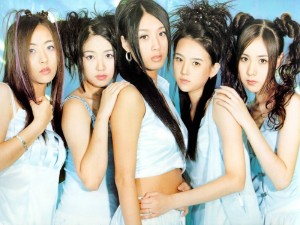 The spectacular success of H.O.T was a critical sign to Lee Soo-man, and opponent entertainment companies, that his training system worked and it worked well. Through the right methods they had the ability to produce super celebrities and to profit immensely from them.
The spectacular success of H.O.T was a critical sign to Lee Soo-man, and opponent entertainment companies, that his training system worked and it worked well. Through the right methods they had the ability to produce super celebrities and to profit immensely from them.
This realization resulted in a major paradigm shift within both the popular music industry and entertainment companies, morphing them into their current state. Cue an onslaught of debuts of who we now call the original pioneers of idol groups in Kpop. Between the years 1997 and 2000 an array of groups emerged including the longest running idol group Shinwha, Sechs Kies, g.o.d, Fly to the Sky as well as the first of the girl groups S.E.S, Baby Vox and later on Fin.K.L.
These groups were products of training systems devised by entertainment companies where members were developed in various areas of performance and become singers that as the name ‘idol’ suggests, admired not just for their vocal and dance talent, but also for their seemingly god-like images of perfection. These groups all experienced various degrees of success depending on their appeal to fans, but what was clear was the notion of an idol group was fast becoming accepted into mainstream culture and was here to stay.
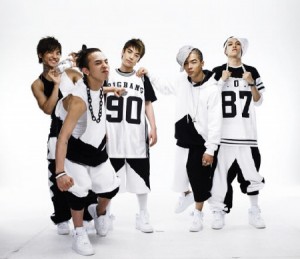 Fast forward a few years and you had the debuts of arguably two of the most influential and talented second generation idol groups in K-pop history — DBSK and Big Bang. With these two industry giants we saw the definitive idol group become even more multidimensional.
Fast forward a few years and you had the debuts of arguably two of the most influential and talented second generation idol groups in K-pop history — DBSK and Big Bang. With these two industry giants we saw the definitive idol group become even more multidimensional.
DBSK were, and still are, like demi-gods. In addition to the standard requirements, they had upgraded choreography, incredible live vocals and were more than proficient at commanding stages everywhere. Plus they had a secret weapon that embodied the description of perfection personified in a man named Kim Jae-joong. With Big Bang, Yang Hyun-suk was able to facilitate major attention to hip hop music and added rappers to the mix. In came a whole new style of idol group that has gone on to inspire countless third generation idols today. These two groups were also the first to foray into international waters and gain widespread success overseas, further spreading the Hallyu wave and inspiring groups all over Asia.
As the idol group phenomenon gained momentum the blueprint diverged into different variations. Members in groups were given roles to excel at, for example you had the main dancers, the main vocals, the visual and the rappers. However companies then began to try and test almost every sort of alteration to these basic requirements you can imagine and filter their idols into the entertainment industry.
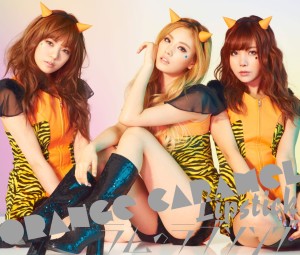 SM Entertainment introduced larger than normal pop groups through both SNSD and Super Junior so fans had more people to fall in love with. There was an introduction of multi instrumentalist idols a la FT Island. As popularity grew, participation in variety shows became necessary to promote groups so members were being included for their variety skills on top of other skills.
SM Entertainment introduced larger than normal pop groups through both SNSD and Super Junior so fans had more people to fall in love with. There was an introduction of multi instrumentalist idols a la FT Island. As popularity grew, participation in variety shows became necessary to promote groups so members were being included for their variety skills on top of other skills.
Beginning with Hangeng, members began being recruited from other countries to widen the groups appeal. We saw Pledis Entertainment try their hand at a graduation system through After School. JYP Entertainment created specialised groups such as 2PM who focused on dance and performance whilst their counterparts 2AM were marketed as a vocal centric group. Subgroups such as SJ-M and Orange Caramel were established to broaden the type of music released. Suddenly groups were appearing as aliens from outer space sent to earth such as B.A.P and EXO. And nowadays it is almost impossible to find a successful group in which a member has not tried their hand at acting, presenting, musicals or even radio broadcasting.
Furthermore, almost every single type of concept has also been tried and tested in an attempt to stand out, but that is another topic in and of itself. The point is that the popularity of idol groups in South Korea has become so widespread that the market has become completely saturated with groups who have so much more to prove to even have a chance at getting noticed than was necessary over 10 years ago. K-pop has evolved so much over the years that the standards by which idol groups are held nowadays have become so unbelievably high that it is not surprising that there have been many cases of idols being overworked.
I’ll argue for a case that there is a much higher abundance of talent present in the industry now than ever before because there is now a necessity for stars to be multi-talented. But amongst the fierce competition it seems that we have seen every possible variation of idol group there is to see, and the notion is starting to become quite monotonous. So the question is, where does it go from here? Has the idol group system finally run its course?
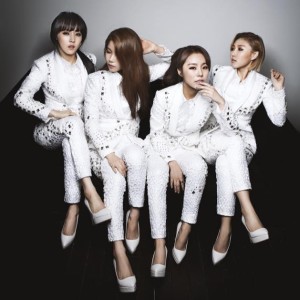 With the rise in solo debuts and idols branching off from their groups to establish their own careers it may seem that way. We’ve also seen some promising debuts in 2014 in groups such as Mamamoo and WINNER, and there has been a further shift in paradigm towards self compositions where idols are taking control of their production. However, the fact of the matter is, the idol group system has become so deep rooted into mainstream music that it is difficult to state that it will ever fully go away. As such, maybe this system will just keep on evolving, and 2015 will keep surprising us as fresh talent take centre stage and make their mark on their scene, just as Seo Taiji and the Boys did all those years ago.
With the rise in solo debuts and idols branching off from their groups to establish their own careers it may seem that way. We’ve also seen some promising debuts in 2014 in groups such as Mamamoo and WINNER, and there has been a further shift in paradigm towards self compositions where idols are taking control of their production. However, the fact of the matter is, the idol group system has become so deep rooted into mainstream music that it is difficult to state that it will ever fully go away. As such, maybe this system will just keep on evolving, and 2015 will keep surprising us as fresh talent take centre stage and make their mark on their scene, just as Seo Taiji and the Boys did all those years ago.
(YouTube [1][2], TheNational, KoreaHerald, Images via SM, YG, Pledis, DR Music)
